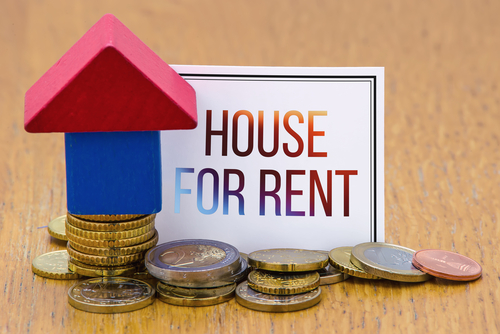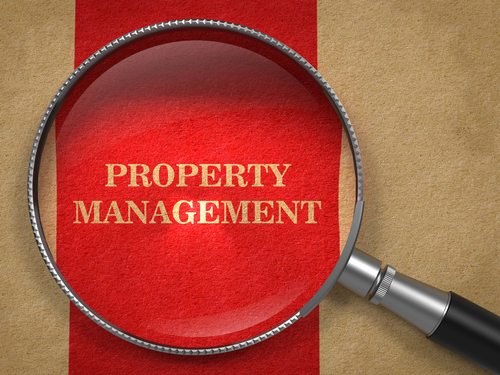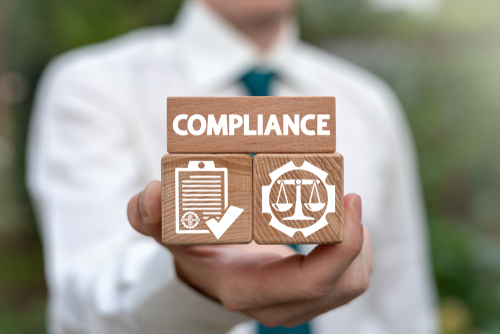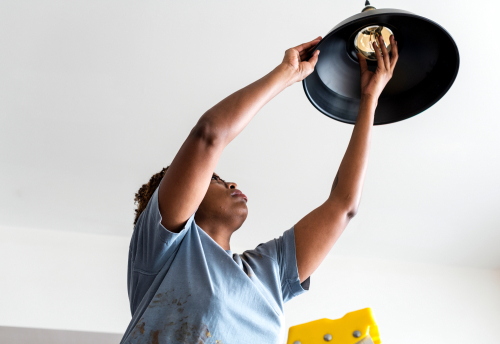
If you own rental properties, you know that sometimes there are periods of vacancy between tenants. While it’s not ideal to have an empty rental property, property turnover is a significant responsibility for rental business owners. As a property owner or manager, there are steps you can take to ensure minimal vacancy. Read along as we go over the process of finding new tenants with a rental property turnover checklist.
How Can Rental Owners Prepare for Tenant Turnover?
Unfortunately, tenant turnover is either expected or unexpected. Sometimes, a tenant will move out unexpectedly without much warning. Other times, you’ll have ample time to prepare for a new tenant in your property.

Tenant turnover occurs when a tenant decides to move out rather than renew their lease in your rental home. Tenant turnover can happen for various reasons and doesn’t mean that you did anything wrong. For example, they may have found work in a new city, wanted to live closer to family, or were only in the area because they were going to school. So, don’t take it too personally if a tenant decides to move rather than renew their lease.
On the other hand, some tenants may move out because the rent was too high or didn’t enjoy their rental experience. If this is the case, make sure to address any issues and obtain feedback from the tenant to see what went wrong. Then, make changes as necessary to provide future tenants with a better experience.
Now, let’s go over how property owners can smoothly handle a tenant moving out with this rental property turnover checklist.
Rental Property Turnover Checklist for Rental Owners
While turnovers are ultimately undesirable for rental owners, it’s crucial to reduce vacancy time as much as possible. To ensure a smooth rental property turnover, landlords need to have a complete list of actions and responsibilities to follow during this time. Let’s go over these steps in detail.
- Tenant Gives Move Out Notice
- Tenant Returns Keys
- Schedule a Move Out Inspection
- Take Note of Any Damages
- Complete Repairs and Maintenance
- Thoroughly Clean the Property
- Schedule Compliance Inspections as Needed
Tenant Gives Move Out Notice
As soon as your tenant lets you know that they’ll be moving out, make sure to put it in writing. Then, you’ll want to have your tenant sign it to prove that they acknowledged the change in tenancy.
Once you’ve received the official move-out notice, you’ll want to send your tenant a written copy of detailed move-out instructions and any expectations for the property.
Tenant Returns Keys
Once your tenant has moved their items out of the rental unit, the last step for them to do is hand over the keys. That said, rental owners must understand that a tenant has not fully surrendered the property until they’ve returned the keys.
After you have the keys in hand, you can assume that your tenant has moved their items out and will not be back to the unit for personal belongings.
Schedule a Move Out Inspection

During or after a tenant returns the keys to the rental unit, it’s time to complete an inspection of the property. Since tenants have the right to be present for inspections, it’s easy to complete this while they return the keys.
During the inspection walkthrough, the landlord or inspection employee should document any damages or issues within the property by taking photos.
Take Note of Any Damages
After the inspection, review photos and notes carefully to determine if any damages were present in the property. Then, you can thoughtfully decide if any damages are worth withholding some of the tenant’s security deposit.
If you decide to withhold any portion of the deposit, you need to have an itemized list of deductions to give the tenant.
Complete Repairs and Maintenance
Once the property is empty, you can complete any repairs or routine maintenance necessary. Additionally, if any upgrades are needed, now’s the time to make sure they get done.
Commonly, rental property owners need to service or upgrade rental unit appliances. Before a new tenant moves into the unit is a great time to complete these tasks. Later, we’ll discuss some of the most common maintenance and repair tasks during tenant turnover.
Thoroughly Clean the Property
Once you make repairs or upgrades to your rental unit, thoroughly cleaning the property is crucial. Even though the previous tenant likely cleaned the unit, it’s vital to hire someone else to professionally clean and sanitize the unit.
After all, nobody wants to move into a place that was only halfway clean. Additionally, consider whether the previous tenant had pets and make sure any pet stains or messes are addressed appropriately.
Schedule Compliance Inspections as Needed
Finally, before having another tenant living in your rental unit, ensure all compliance inspections are complete. It may be time to complete a lead test or other state and local inspections.
Luckily, rental owners can count on their local Washington DC property management company to help with the tenant move-out process and screening new tenants to occupy the unit.
Maintenance and Repair Processes to Address During Tenant Turnover
Once a tenant moves out of a rental property, we already know that you must complete maintenance and repairs before another renter moves in. But, what do some of these repairs entail? Let’s discuss three of the most common maintenance tasks for landlords to complete after a tenant moves out.
- Change All the Locks
- Deep Clean Carpets
- Paint and Repair Walls
Change All the Locks
Changing the locks is a crucial part of the process when a tenant moves out. Although you will likely collect the keys from the previous tenant, you never know who else may have a copy. Changing the locks will ensure privacy and safety for your next tenant.
Deep Clean or Replace Carpets
Carpets are sometimes hard to keep clean–especially if you have pets or children. If you know that your previous tenants had animals in their home, inspect the carpet closely. Most of the time, it’s worth deep cleaning. However, sometimes, you may have to tear it out and replace the carpeting.
Repair and Paint Walls as Needed
Finally, many tenants opt to hang their own decor and personalize the rental unit to their liking. However, this can inevitably create holes in the drywall or damage the wall itself. If there are major damages to the walls, landlords should repair them and consider repainting.
Three Ways to Reduce Tenant Turnover
Typically, landlords don’t like to hear that they’re losing a good tenant. So, how can you reduce the tenant turnover rate and secure quality tenants each time? Here are a few tips.
- Make Periodic Upgrades
- Find Quality Tenants
- Carefully Contemplate Rent Increases
Make Periodic Upgrades
Making periodic upgrades to your rental property can keep tenants happy and secure within their respective units. For example, if their dishwasher has been broken for months and continues to go without fixing, your tenants will get frustrated.
Additionally, if all the appliances are outdated in your rental properties, finding new tenants willing to live there can be hard. So while you don’t need the newest technology or appliances available, consider upgrading them every once in a while to keep up with the times.
Find Quality Tenants
It may sound like a given, but finding amazing tenants that respect your property can reduce tenant turnover rates. If you allow just anyone to occupy your rental, you could end up with someone who won’t pay rent or cause damages to your property.
To find quality tenants, make sure to complete background checks, ask for references, and meet with them in person before signing a rental contract with them. Make sure you have a good idea of who they are before you allow them to live on your property.
Carefully Contemplate Rent Increases
Increasing the monthly rent is one major reason many tenants leave their current rental units. So, before raising your rental rate, think about it thoughtfully. After all, tenants and landlords are on two separate sides of the coin–landlords want to charge as much as possible, and tenants want to pay as little as possible.
Before raising the rent irrationally, consider some of the following scenarios:
- How do your prices compare with other similar properties?
- Can your tenants afford to pay an increased price?
- How long will it take to fill a vacancy if your tenants move out?
If you don’t have solid answers to these questions, you should further consider your rental rate increase.
Hiring Property Management to Help With Tenant Turnover

Tenant turnover can be a costly process. However, now that you’ve learned some tips to reduce tenant turnover rates, you should feel more confident that you can provide a great rental that tenants won’t want to leave. That said, even if you don’t live near your property, you can still complete your rental property turnover checklist.
Hiring a trusted property management team like Bay Property Management can help your rental business succeed in many ways. For example, we can handle tenant screening, rent collection, eviction services, and more. Contact us today if you need management services in Baltimore, Philadelphia, Northern Virginia, or Washington DC.


